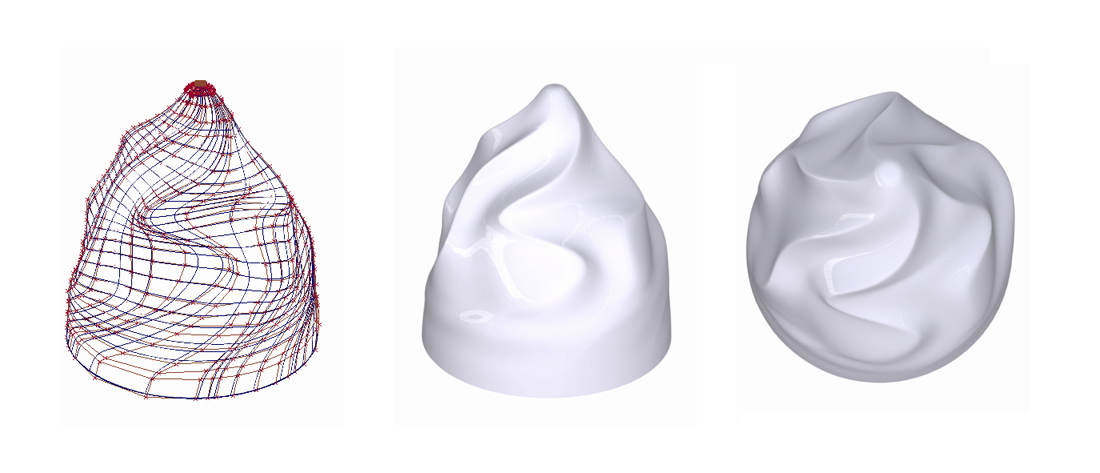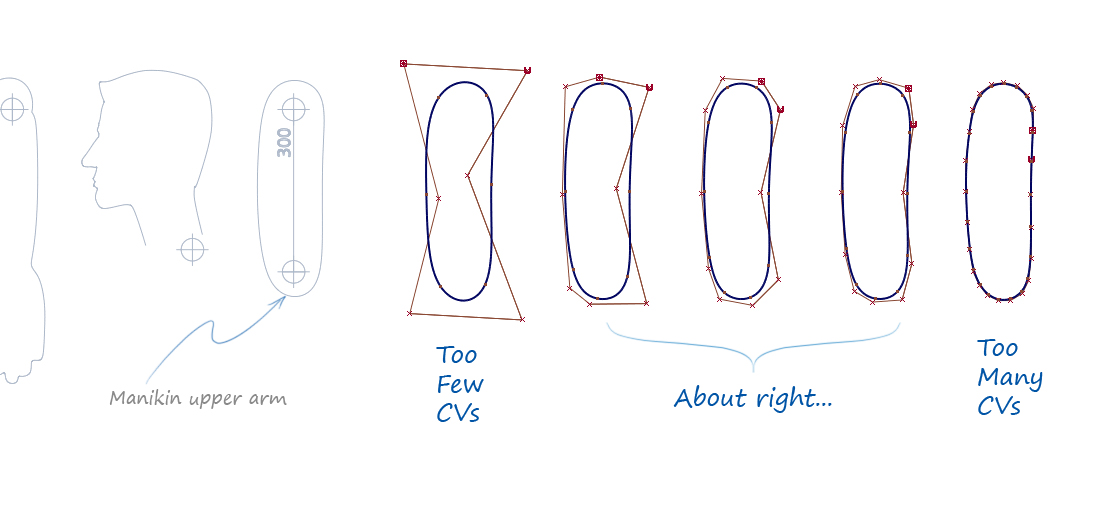When creating curves and surfaces in Alias, we always try to aim to use as few CVs as possible. The main reasons for this are:
- Each CV takes hard work to get into the right position. Fewer CVs means less work.
- With fewer CVs, your curves and surfaces will be naturally smoother – and this is normally something we want in our designs.

Applying the Rule
There are two situations when applying the rule will give you the most benefit:
- Early concept modeling – you don't need to put extra effort into worrying about smooth surfaces. If you use the minimum number of CVs to create the shape, the surface will be naturally smoother.
- Later on, when creating detailed models for production, some of the Alias surface tools may create surfaces with many CVs. Spending extra time rebuilding these with fewer CVs will improve the smoothness and continuity. For Class A work, it is normal to limit surfaces to being single-span, to ensure perfect smoothness. (See Alias Golden Rule 3: Use single-span for smooth curves.)

Breaking the Rule
If you want to build a large area of your model from a single surface, then you may need many CVs to be able to create surface detail.
This is a powerful, quick modeling technique, made possible by using multi-span curves and surfaces. To use it well, you will need to have good control over the CV positioning – a skill you will need to practice.
For designs like this plastic food packaging cap, it achieves a result that would be almost impossible with separate surface patches, and as it is a low-cost product, then the fact that the surface isn't taut or perfectly smooth isn't a problem.

It is possible to apply this approach to concept modeling for vehicle design, but it requires a lot of skill manipulating the CVs and is an unusual approach. Also you need to recognize that the surfaces won't be smooth enough or controlled enough for production.
Theory and Practice
How to recognize when you have too few or too many CVs
Each CV should 'have a job to do' – each CV should be instrumental in bending and shaping the curve.
Too many: If the CVs just seem to be maintaining the shape rather than influencing it – you may have too many CVs. Another indication is when you move one CV, and then have to compensate by moving the CVs around it to maintain the shape you want.
Too few: If you have to pull your CVs into extreme positions to achieve your shape, then it is usually better to allow one or two extra CVs to achieve the shape without too much strain.
